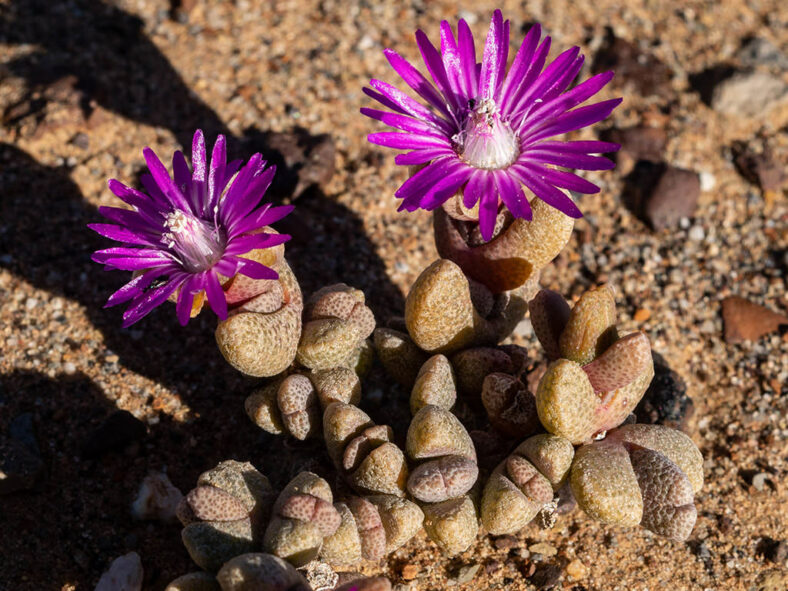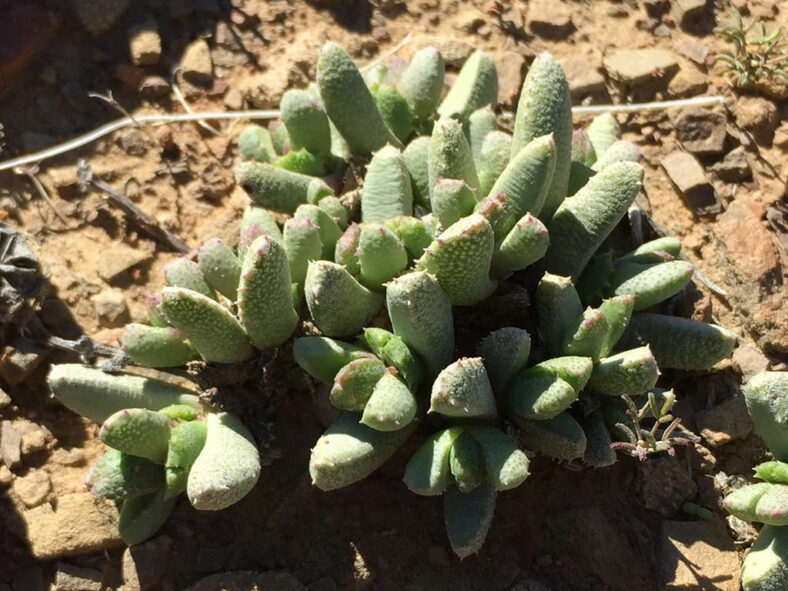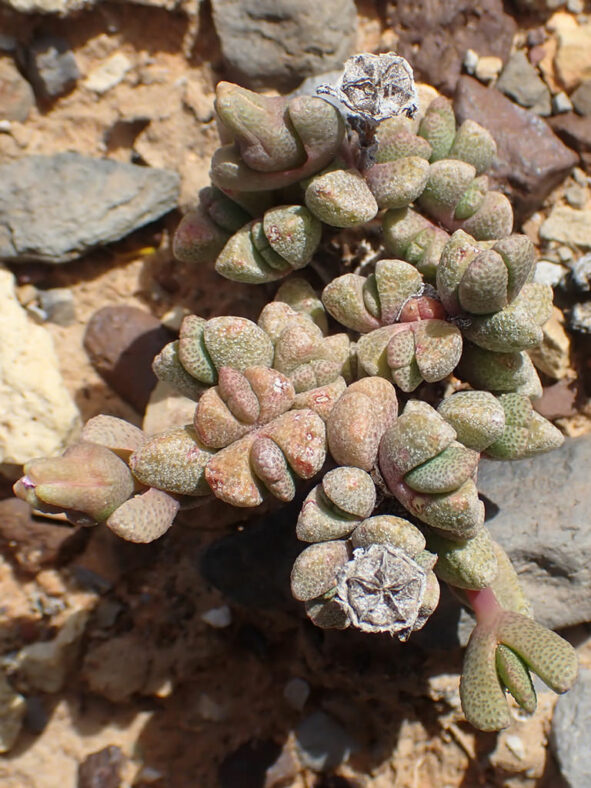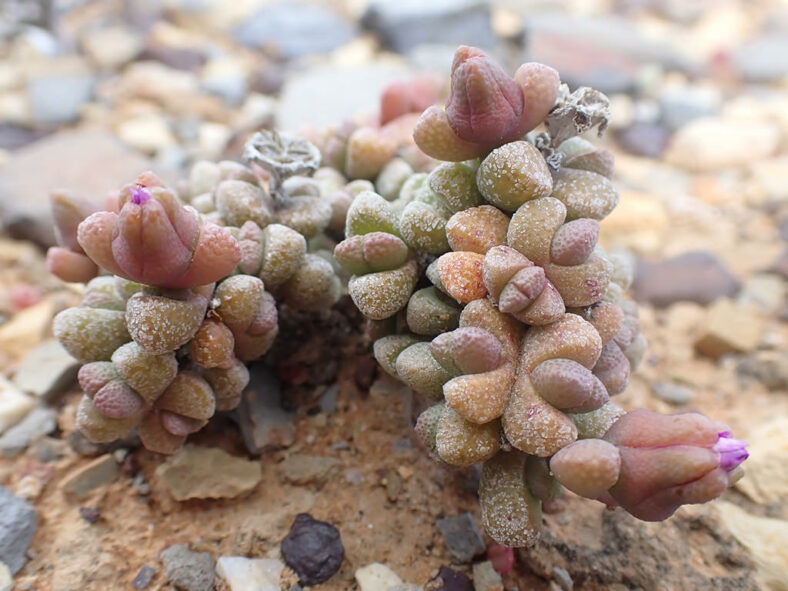Hammeria meleagris is a charming little plant, first described by Louisa Bolus in 1928 as Mesembryanthemum meleagris.
Scientific Name
Hammeria meleagris (L.Bolus) Klak
Synonym(s)
Hammeria salteri, Lampranthus meleagris, Mesembryanthemum meleagris, Ruschia salteri
Scientific Classification
Family: Aizoaceae
Subfamily: Ruschioideae
Tribe: Ruschieae
Genus: Hammeria
Etymology
The specific epithet "meleagris" (pronounced "mel-EE-uh-gris") means "turkey, guinea fowl" and refers to the leaves spots like a guinea fowl.
Origin
Hammeria meleagris is native to South Africa. It grows in shale flats in the Northern Cape and Western Cape provinces.
Description
Hammeria meleagris, also known as Hammeria salteri, is a succulent subshrub with branches that bear leaves in pairs of dissimilar size and shape. It can grow up to 2.4 inches (6 cm) tall and spread 3.3 feet (1 m) in diameter. When young, this plant is compact, but it develops long, decumbent to creeping branches as it matures. The leaves are glaucous, either adpressed or spreading, triangular in cross-section, and have small apical teeth. They can measure up to 0.6 inches (1.5 cm) long and 0.15 inches (0.4 cm) thick.
From late winter to early spring, Hammeria meleagris produces solitary flowers with pink, longitudinally striped petals. The flowers can reach a diameter of 1 inch (2.5 cm) and appear on stalks that can grow up to 1 inch (2.5 cm) long. The fruits are 5-locular capsules with broad valve wings and without closing bodies.

How to Grow and Care for Hammeria meleagris
Light: Hammeria meleagris requires bright light but not too much direct sunlight. So, a windowsill that receives 4 to 5 hours of direct sunlight in the morning and partial shade in the afternoon will be a perfect spot for indoor growing.
Soil: The plant thrives in porous soil, allowing the water to drain away quickly. Therefore, use commercial soil for succulents or make your own well-draining mix.
Temperature: High temperatures are not a problem as long as there is plenty of fresh air, but this plant is not cold-hardy. It grows best in USDA Plant Hardiness Zones 10a to 11b, with average minimum winter temperatures ranging from 30°F to 50°F (-1.1°C to 10°C).
Watering: To keep Hammeria meleagris healthy, it is essential to know when, how much, and how often to water. During the dormant period, usually in summer, the plant requires little or no water. When it begins to grow again in the fall, water it thoroughly but allow the soil to dry between waterings.
Fertilizing: As long as you repot this plant every two years, it does not need fertilizer.
Repotting: Even if your plant can stay happy in the same pot for years, you can repot it occasionally to give it more space anytime during the growing season. However, the best time is at the beginning of the growing season.
Propagation: Although Hammeria meleagris is usually started from seeds, it can also be easily propagated from stem cuttings during the growing season.
Learn more at How to Grow and Care for Mesembs.
Toxicity of Hammeria meleagris
Hammeria meleagris is considered non-toxic, so having it around kids and pets is safe.
Links
- Back to genus Hammeria
- Succupedia: Browse succulents by Scientific Name, Common Name, Genus, Family, USDA Hardiness Zone, Origin, or cacti by Genus
Photo Gallery
Click on a photo to see a larger version.


